- Blog
- The Ultimate Guide to On-Site Marketing: Definition, Benefits, Examples
The Ultimate Guide to On-Site Marketing: Definition, Benefits, Examples
-
Barbara Bartucz
- Conversion
- 6 min read
Table of Contents
Last year’s economic downturn has taken a toll on ecommerce businesses, and winning new customers has become even harder.
Many businesses are experiencing a drop in sales leads and conversion rates, while customer acquisition costs are higher than ever.
That puts onsite marketing in the spotlight, because it allows you to catch your visitors at just the right moment when they’re on your website and engaged.
But what exactly is onsite marketing? How can you implement it on your website?
We’re here to answer those questions. Let’s get down to it!
What is onsite marketing?
The term “onsite marketing” refers to the tactics and techniques employed by businesses to engage with visitors directly on their websites.
These tactics can include website popups, sticky bars, signup forms, chatbots, onsite notifications, embedded banners, and so on.
The main purpose of onsite marketing is to convert more website visitors into customers.
What is the difference between onsite and offsite marketing?
Now let’s break down how onsite marketing differs from offsite marketing.
Offsite marketing focuses on reaching potential customers through external channels like social media or paid advertising platforms. Those marketing messages are aimed at driving traffic to your online store.
On the other hand, onsite marketing targets individuals who are already on your website. It nurtures the relationship with people who’ve already shown interest by landing on your website, and aims to drive conversions.
For a more detailed comparison, check out this table:
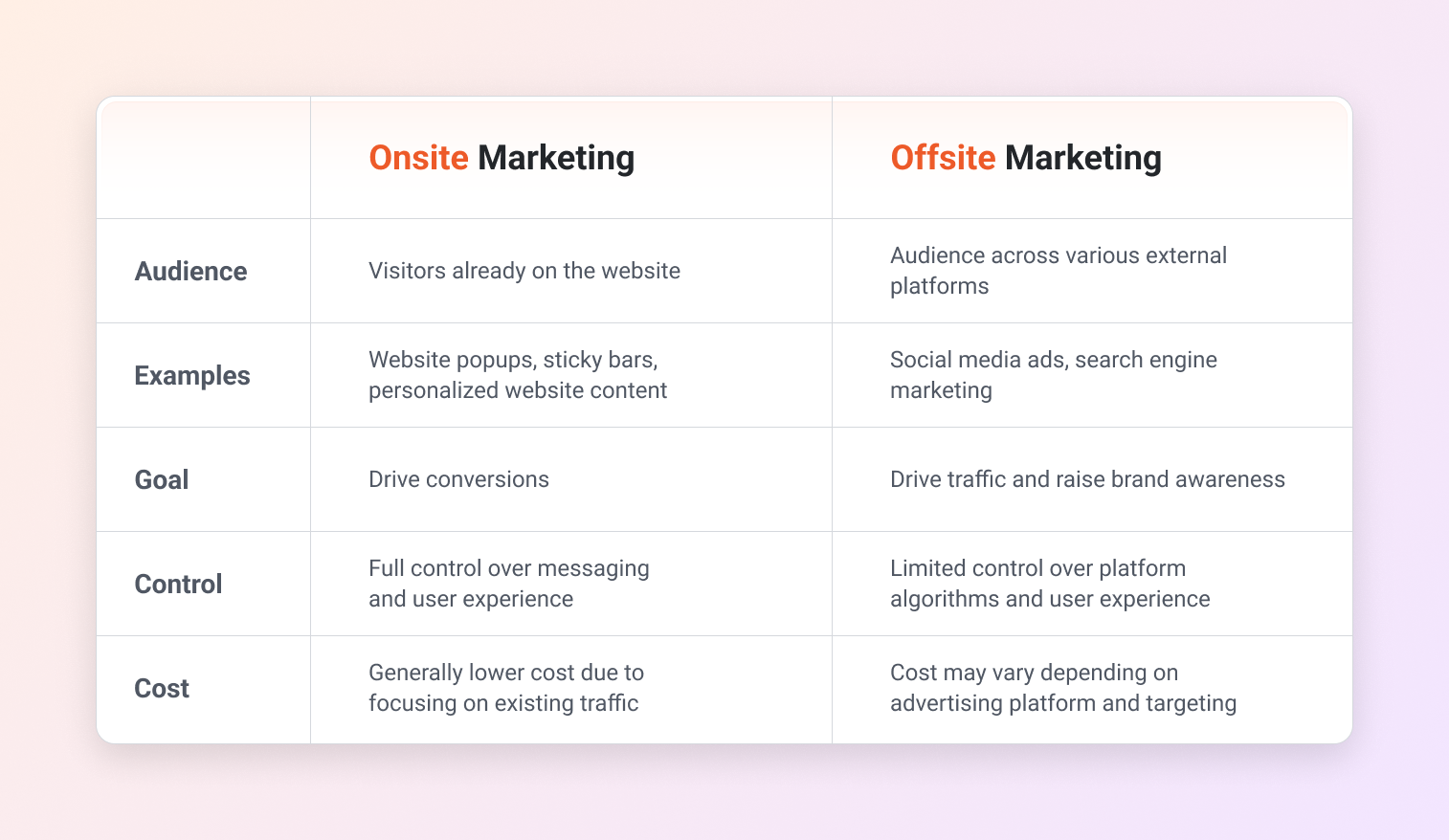
Benefits of onsite marketing
Onsite marketing offers numerous advantages that contribute to improving the overall customer experience and driving business success.
Here are the main reasons why you should use onsite marketing tactics:
- Personalized shopping experiences: You can tailor messages and offers to specific visitor groups based on customer behavioral data.
- Direct communication: You can engage with customers in real time, addressing concerns, providing assistance, and building trust.
- Increased conversions: By offering more personalized shopping experiences and addressing customer needs promptly, onsite marketing can lead to higher conversion rates.
- Proactive problem-solving: Spot and resolve issues as they arise, improving user experience and customer satisfaction. Monitor visitor behavior and feedback to quickly identify pain points or areas for improvement and implement timely solutions.
- Data insights: Gain valuable data on visitor behavior to fine-tune marketing strategies and make more informed decisions.
6 onsite marketing examples to inspire you
Seeking an inspiring example of onsite marketing?
Let’s explore how various ecommerce websites implement effective onsite marketing strategies.
1. Vegetology list-building campaign
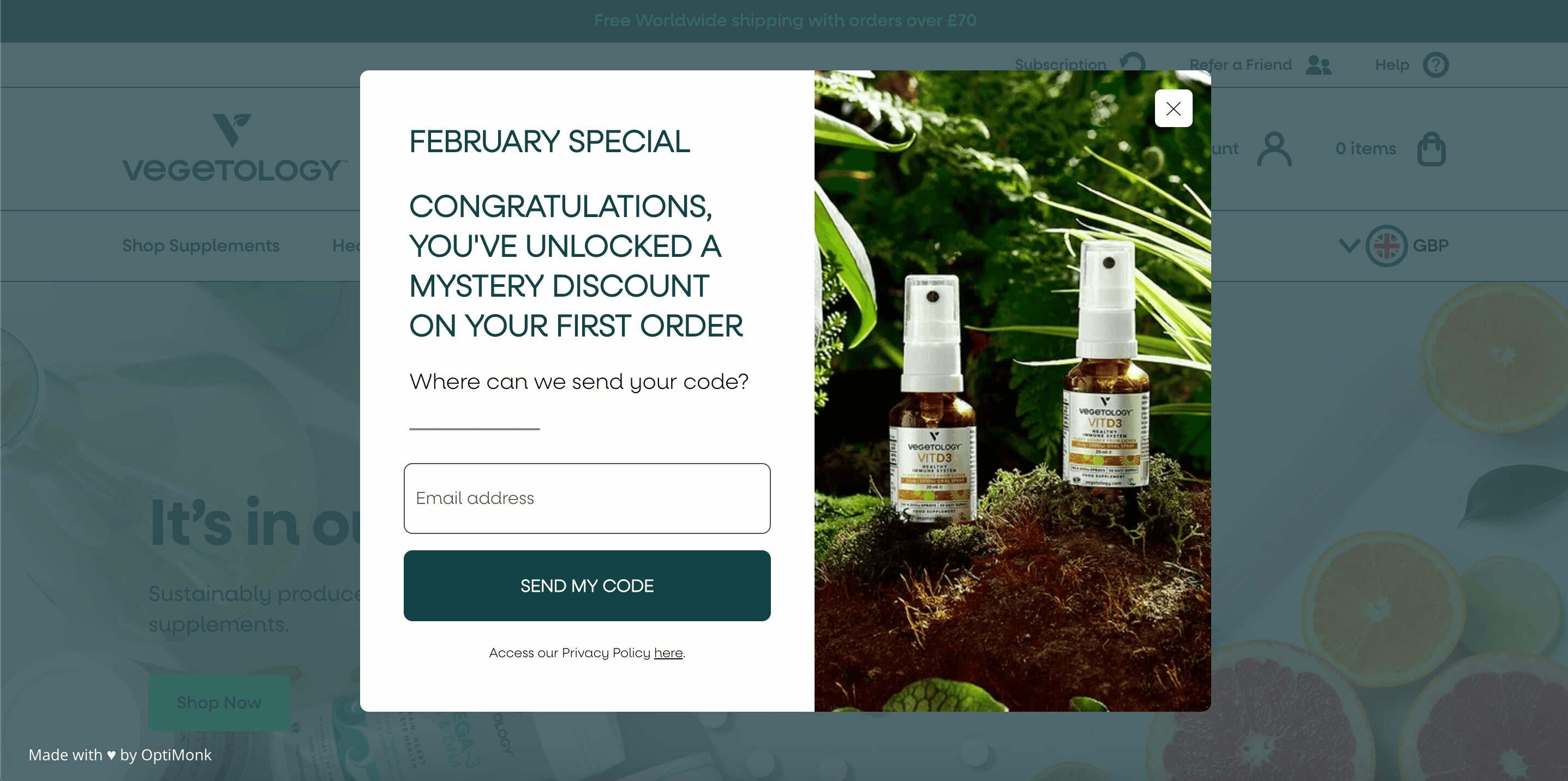
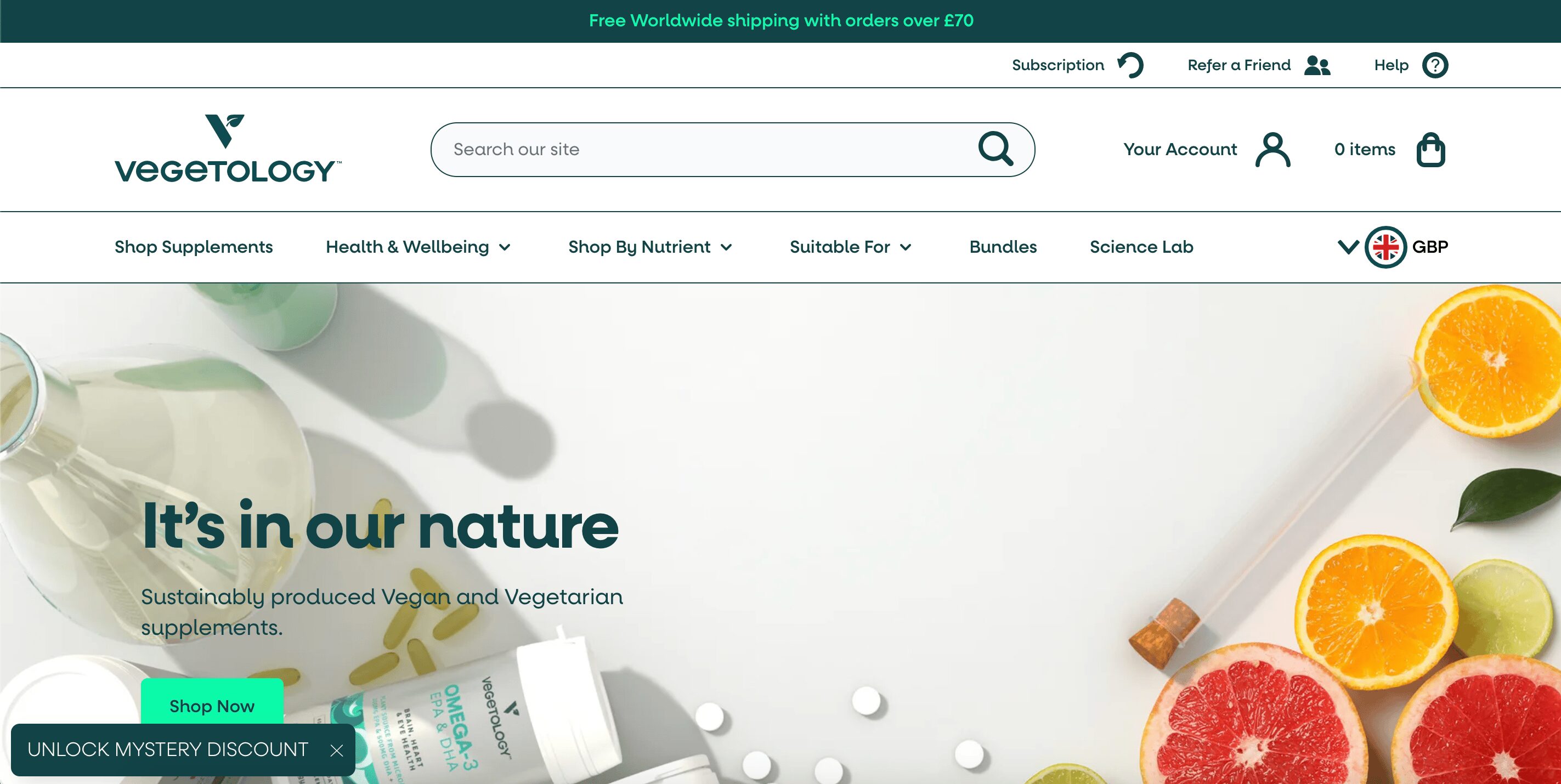
Building an email list is a great way to convert visitors into customers. Vegetology tried this onsite marketing strategy with an email list-building popup campaign.
However, instead of just offering a regular discount, they made it more exciting by calling it a “mystery discount.”
They also added the current month to the headline (“February special”) to make people feel like they had to act fast.
Using OptiMonk’s Smart Tags feature, Vegetology won’t need to update the popup each month—it’ll simply change automatically!
After someone closes the popup, Vegetology shows a small teaser that stays on the screen to engage visitors still browsing the website.
With this strategy, they achieved a 13.8% popup conversion rate. As a result of gaining all those extra subscribers, they also increased their ecommerce conversion rate by 21%.
Read more about Vegetology’s success here.
2. Lammle’s product recommendation campaign
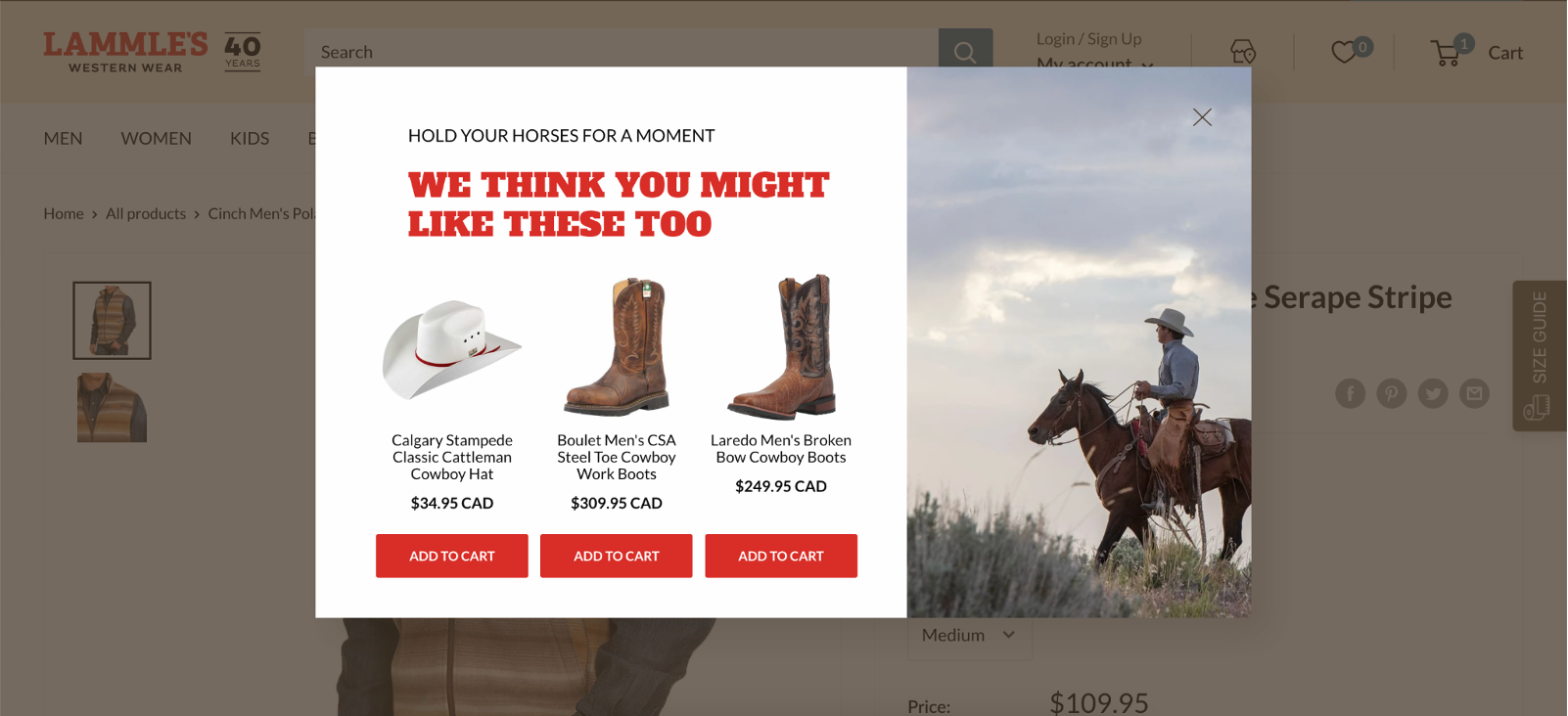
For online businesses, product pages often serve as stand-ins for the homepage. This was the case for Lammle’s, as many of their visitors landed directly on their product pages from Google Shopping Ads.
Due to this dynamic, many visitors were already familiar with their pricing. What they needed was a bit of guidance and more information about Lammle’s products.
To achieve this, they implemented an exit-intent popup to further engage visitors who were about to leave the site.
This smart move increased revenue by 23.5%!
Discover how Lammle’s pulled it off here.
3. Goldelucks USP campaign
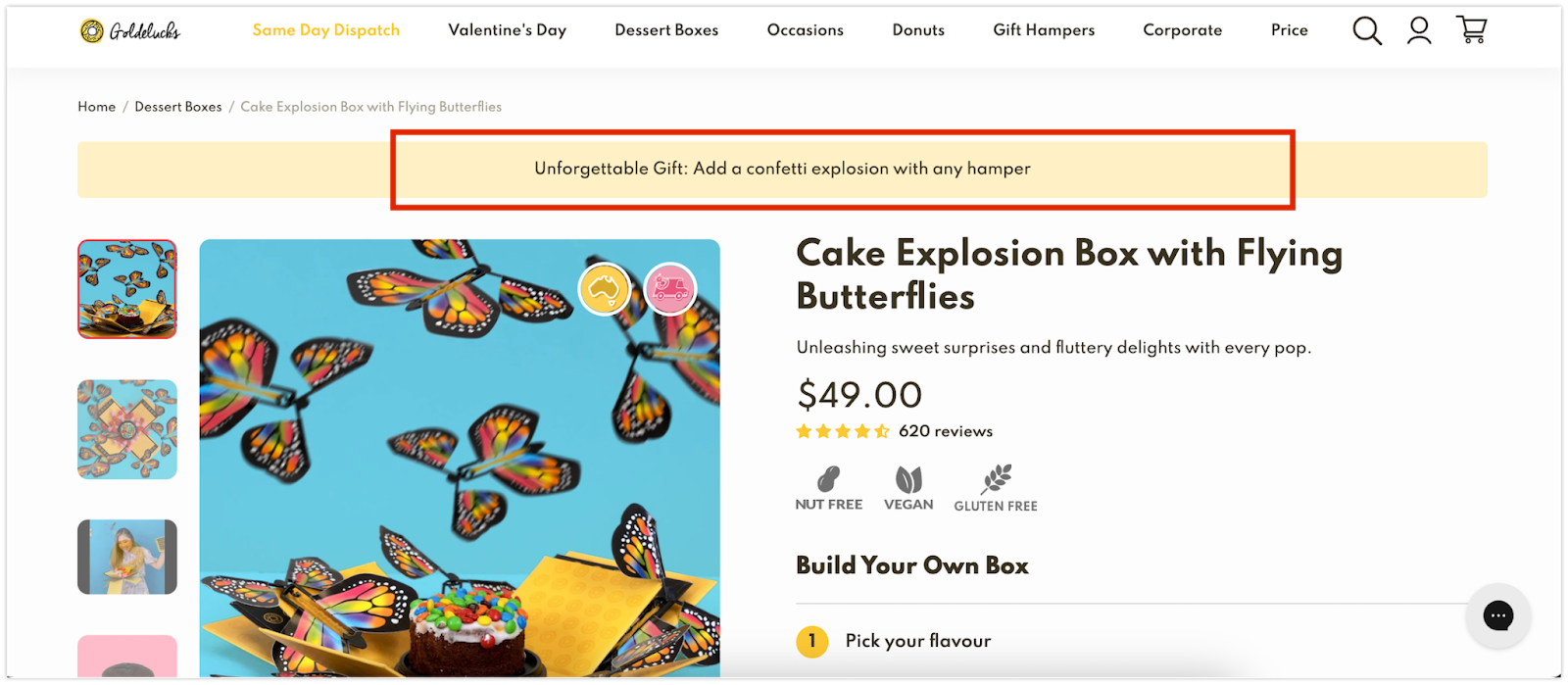
Want to share more information with your website visitors? Follow Goldelucks’ lead and add an onsite notification bar to highlight your unique selling proposition.
In this case, they wanted to get their marketing messages across even more effectively, so they used OptiMonk’s Dynamic Content feature.
This campaign led to a 66.2% increase in revenue, demonstrating the effectiveness of strategic messaging placement.
Find out more about Goldelucks’ success story here.
4. Crown & Paw free shipping campaign
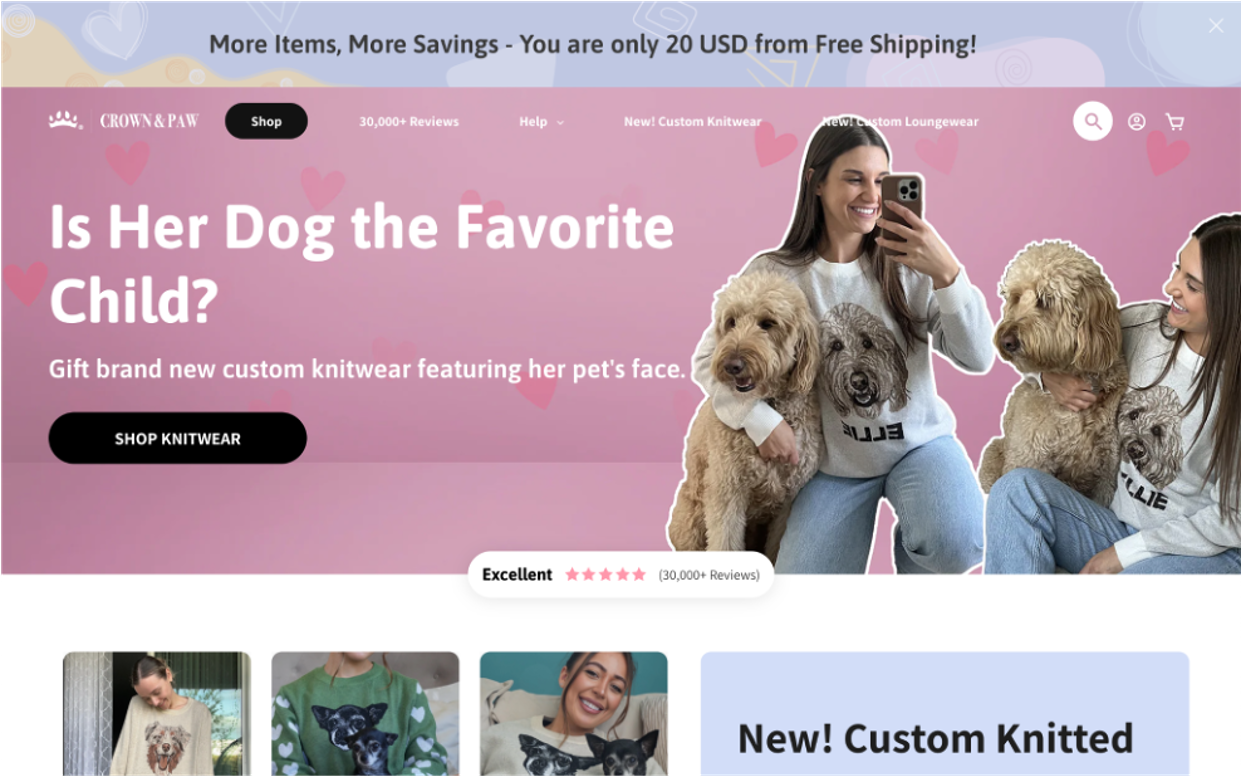
Next up on our list of onsite marketing examples is Crown & Paw.
Unexpected shipping costs often lead to cart abandonment. Crown & Paw knew this, and decided to communicate their free shipping threshold in a prominent place to decrease the cart abandonment rate and increase average order value at the same time.
As part of their onsite marketing strategy, they used a Dynamic Free Shipping Bar, a simple yet powerful visual cue that tells your visitors about the reward awaiting them.
By showing how much more customers needed to spend to unlock free shipping, they increased orders by 7% and revenue by 10%.
Learn how Crown & Paw nailed it with free shipping here.
5. Obvi cart abandonment campaign
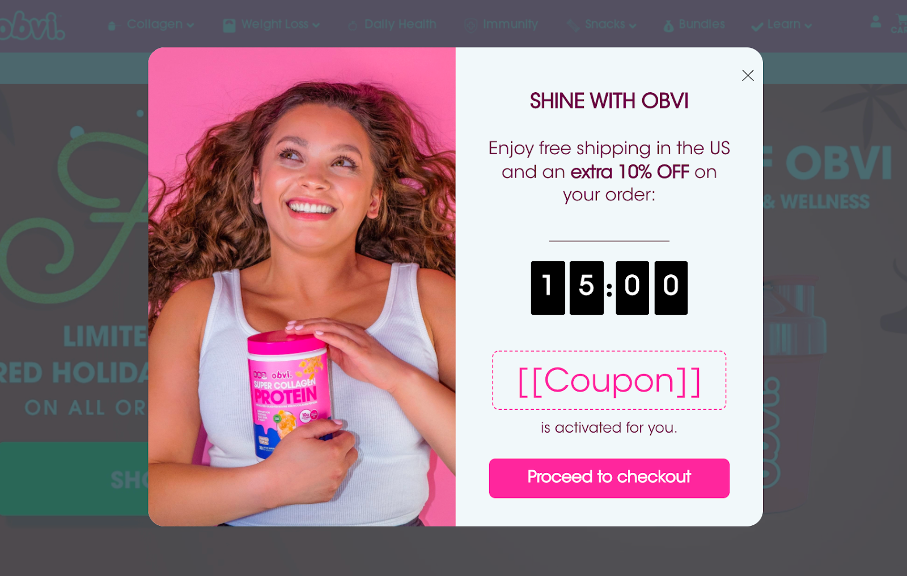
Obvi had another smart idea to get more leads. They gave people who left their shopping carts a 10% discount.
But that wasn’t all: to make their lead generation efforts even more effective, they used a countdown timer to increase the sense of urgency.
Instead of using fixed, generic coupon codes like “15OFF,” they opted for automatically-generated unique codes. This choice makes the codes feel more temporary, upping the chances that recipients will put them to good use.
And finally, Obvi also enabled the auto-redeem feature, which automatically applies the user’s coupon code at checkout (ensuring they don’t forget to redeem the code).
With this campaign, they scored a 25.17% conversion rate!
Discover Obvi’s cart-saving tactics here.
6. Craft Sportswear NA SMS list building campaign
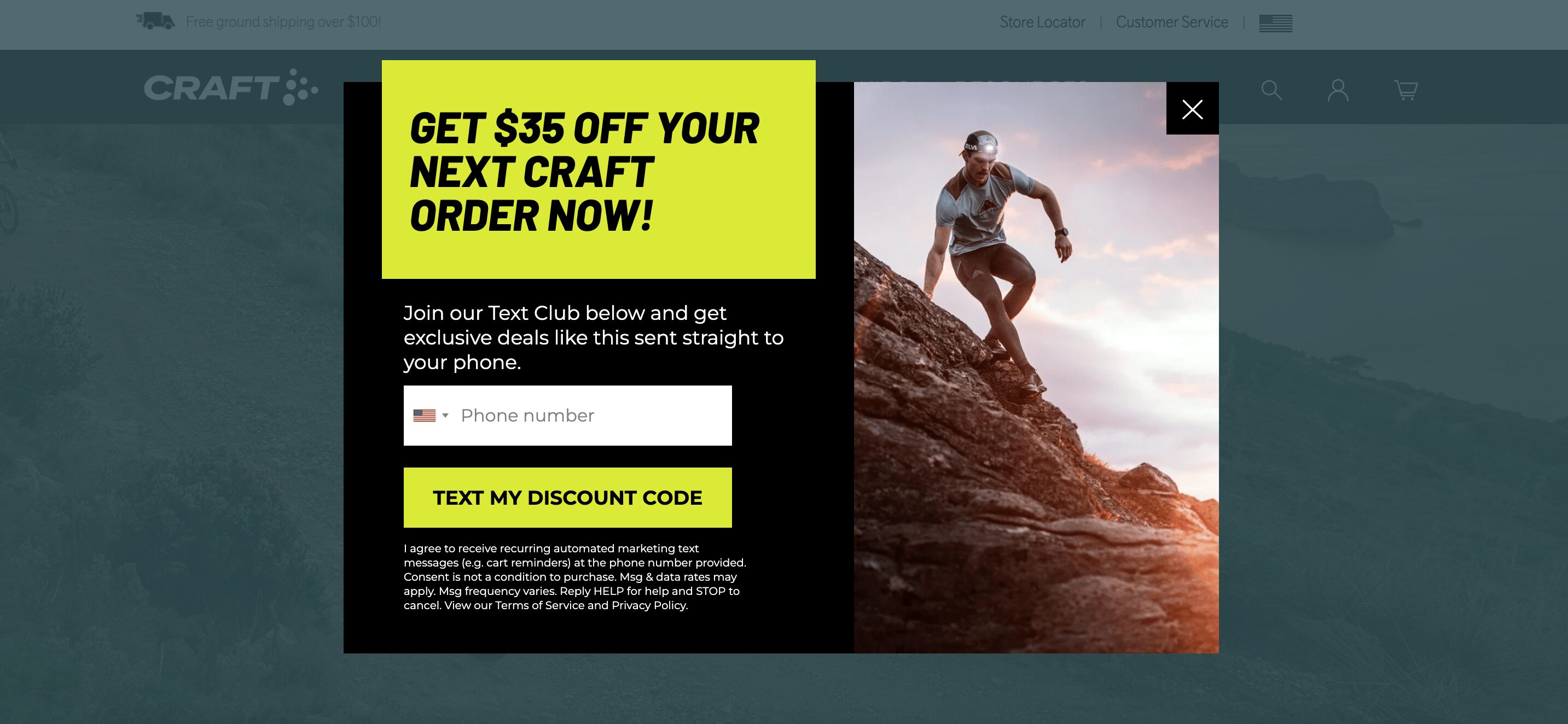
Our final onsite marketing example comes from Craft Sportswear NA, showcasing how they transformed their loyal email subscribers into SMS subscribers through a clever SMS list-building campaign.
Craft Sportswear NA kickstarted their SMS program by offering email subscribers a $35 discount for joining.
By targeting people that were already loyal customers and email subscribers, Craft Sportswear NA engaged with customers that were likely to be open to signing up for the SMS list.
This savvy move led to a stellar 40.44% popup conversion rate, 4,088 new SMS subscribers, and over $21,000 in revenue!
How to get started with onsite marketing?
We assume you’re now convinced to start your own onsite marketing campaigns. So let’s take a step-by-step look at how to kick things off!
1. Know your audience
First things first: knowing your audience is a must. Before you start any marketing campaign, you should know who you’re targeting and understand what they’re interested in.
Use tools like Google Analytics to gather data on the demographics, interests, and behavior of your audience.
2. Set clear goals
Your second step should be to clarify your goals and what you want to achieve with your onsite marketing efforts.
Whether your goal is to increase sales, grow your email list, or improve the user experience for new and existing customers, setting clear objectives will provide direction for your strategies and allow you to track your progress.
3. Choose the right tools
Next, you’ll want to find the right onsite marketing tools. This is not always easy, as there are many different tools to help you with your onsite marketing efforts from popup builders to personalization software and more.
OptiMonk stands out from other tools as a comprehensive conversion rate optimization platform that provides popups, A/B testing, and website personalization capabilities.
If you want to choose a tool that will grow with your needs and budget, OptiMonk is a great choice.
4. Create campaigns for different goals
To make the most of onsite marketing, it’s important to create specific campaigns for different goals.
Here are a few ideas we’ve already talked about in this article:
- List building: Launching popup campaigns can be an effective way to grow your email list. Offer visitors incentives such as discounts or exclusive content in exchange for signing up. Make sure you create personalized experiences with your popups.
- Cart abandonment: Most website visitors leave their cart without buying. Use exit-intent popups to lure customers back to their carts with special offers or incentives. Adding urgency with limited-time discounts or bonuses can encourage prompt action.
- Increase average order value: Consider implementing upselling or cross-selling techniques on product pages to encourage customers to add more items to their carts. Offering bundle deals or setting free shipping thresholds can also incentivize larger purchases.
5. Implement personalization
Adding a personal touch to your onsite marketing can make a huge difference.
By using the data you’ve collected from your audience, you can tailor your messages, product suggestions, and offers to align with each visitor’s interests and preferences.
6. Test and iterate
Don’t be afraid to try out new ideas to see what works best for your audience.
Using A/B testing, you can compare different versions of your onsite marketing campaigns to figure out which ones are the most effective. This way, you can continuously improve and optimize your strategies for better results.
7. Monitor and analyze results
Keep a close watch on how your onsite marketing efforts are performing.
Monitor important metrics such as conversion rate, engagement levels, and revenue generated. By analyzing this data, you can identify areas for improvement and make informed decisions for better outcomes.
Wrapping up
In challenging economic times, employing an onsite marketing strategy can be both savvy and cost-effective. Not only can it drive increased traffic and sales, but it can also enhance the overall user experience on your website.
By leveraging onsite marketing tools like OptiMonk, you can personalize your marketing efforts, engage visitors effectively, and ultimately boost conversions.
Only one question remains: are you ready to embark on this journey?
Migration has never been easier
We made switching a no-brainer with our free, white-glove onboarding service so you can get started in the blink of an eye.

What should you do next?
Thanks for reading till the end. Here are 4 ways we can help you grow your business:
Boost conversions with proven use cases
Explore our Use Case Library, filled with actionable personalization examples and step-by-step guides to unlock your website's full potential. Check out Use Case Library
Create a free OptiMonk account
Create a free OptiMonk account and easily get started with popups and conversion rate optimization. Get OptiMonk free
Get advice from a CRO expert
Schedule a personalized discovery call with one of our experts to explore how OptiMonk can help you grow your business. Book a demo
Join our weekly newsletter
Real CRO insights & marketing tips. No fluff. Straight to your inbox. Subscribe now
Barbara Bartucz
- Posted in
- Conversion
Partner with us
- © OptiMonk. All rights reserved!
- Terms of Use
- Privacy Policy
- Cookie Policy
Product updates: January Release 2025








